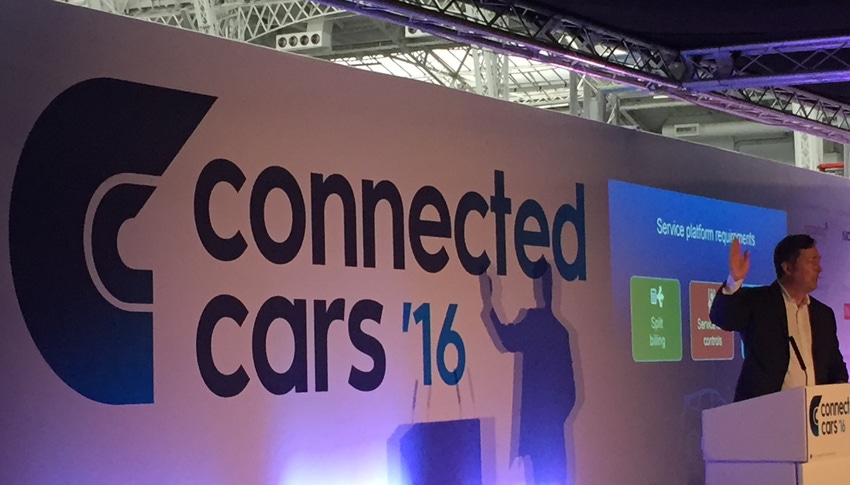Nissan has said an IoT-enabled connected car has the ability to transform and deliver unprecedented benefits to society, while Jasper has questioned the billing strategy of data usage in the future vehicle.
June 29, 2016

Nissan has said an IoT-enabled connected car has the ability to transform and deliver unprecedented benefits to society, while Jasper has questioned the billing strategy of data usage in the future vehicle.
Speaking at Connected Cars 2016 at 5G World in London, Gareth Dunsmore, Nissan’s GM of electric vehicles, said electric and connected vehicles in the future have the ability to interwork with the smart home, provide electricity efficiency to users in the home and the car, as well as boosting mobility for the older generation or those less capable of driving themselves.
“Are we really ready for autonomous vehicles?” said Dunsmore. “Rather, do we want to look at advanced forms of automation, like driver assistance or advances in ABS. We’re looking at freeing up the time we spend in traffic, all with zero emissions and zero fatalities. Autonomous driving can go so much further than just making a zero emission vehicle capable of taking us from A to B. We can see a time where the autonomous vehicle can be driven manually to where the driver wants to go, before leaving it to go and find its own parking space.”
Dunsmore went on to demonstrated how a new model of Nissan will soon be able to both receive and give energy from and to the user’s home. This, in turn could lead to the possibility of returning energy to the national grid in exchange for payment, or to help power IoT devices and services in the smart home.
In response to a question from Telecoms.com regarding societal hesitation over putting faith into an autonomous car, Nissan’s EV director pointed at cruise control as the first of many incremental steps to having drivers put their faith in the capabilities of driverless cars.
“If you use cruise control, you are already putting your faith in an autonomous car,” he said. “Then we will look at having the car slow down and accelerate automatically. Then it will learn to overtake, and if we can get people incrementally putting more of their faith into their vehicles, then that’s how society can shift towards accepting driverless cars. Also, the younger society is more prepared than ever to take a giant leap from one technological phase to the next, so they will be a big target.”
In the Telecoms.com IoT Outlook 2016, one in three respondents said driver assistance will be the biggest benefit of connected cars, while 12% of the 900 professionals questioned said connected cars will be the most lucrative IoT services for operators.
Meanwhile, Jasper Cisco’s Head of Connected Car Marketing, Mark Thomas, says the connected car has unique IoT requirements, and pose their own individual app ecosystem that providers, car manufacturers and operators will need to cater for. He suggested billing is one of the big challenges associated with the connected car.
“Internet services come for free over my phone, so why not in my car?” he said. “As a consumer I’m the one bearing the cost of the data. But in the car space, it’s the car company who will get the data bill, and they need to figure out a way of including a package for users with a subscription fee so they don’t have to pay for that data.”
That, by extension, could see operators treat car manufacturers as some sort of MVNO, insofar as they provide white label solutions to, ostensibly, companies like Nissan, before that bill then gets bundled into a monthly payment plan for the vehicle in total whereby services are included.
“With regards to the role of the wireless operator, we see telcos using split billing technology whereby users can split the data pool they get each month and the car can be included in that family plan,��” said Thomas. “The manufacturer then starts getting a chunk of that. But then we can get into the case where manufacturers get a pool of data each month that they can then defer back to each service provider. While I don’t see manufacturers becoming MVNOs in their own right, they’re certainly very involved in the process of connecting users.”
About the Author(s)
You May Also Like








.png?width=300&auto=webp&quality=80&disable=upscale)


_1.jpg?width=300&auto=webp&quality=80&disable=upscale)


.png?width=800&auto=webp&quality=80&disable=upscale)